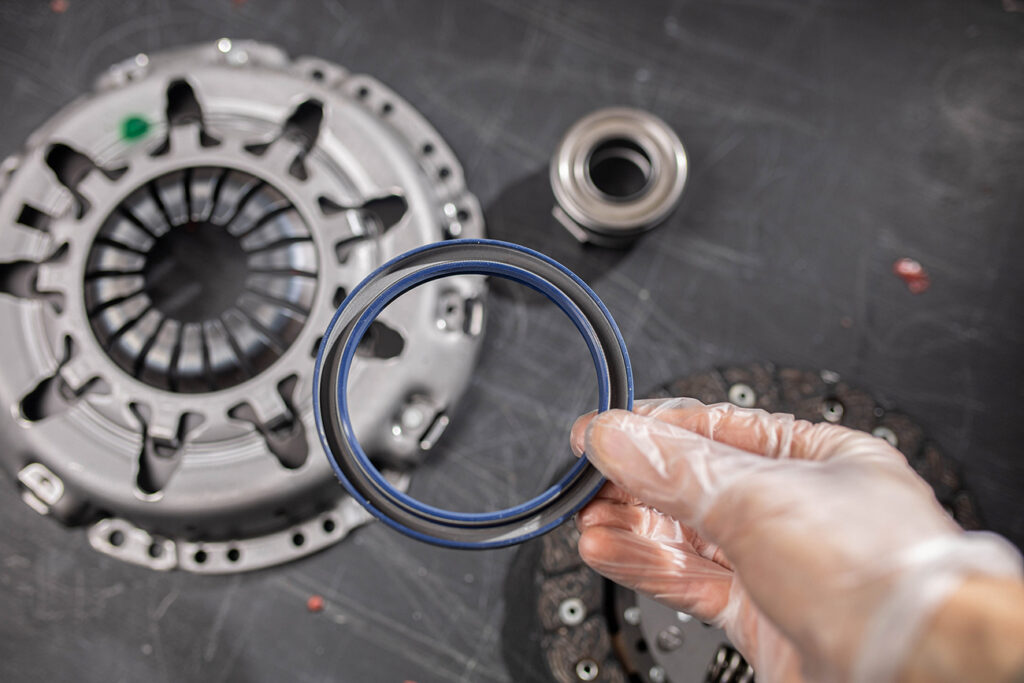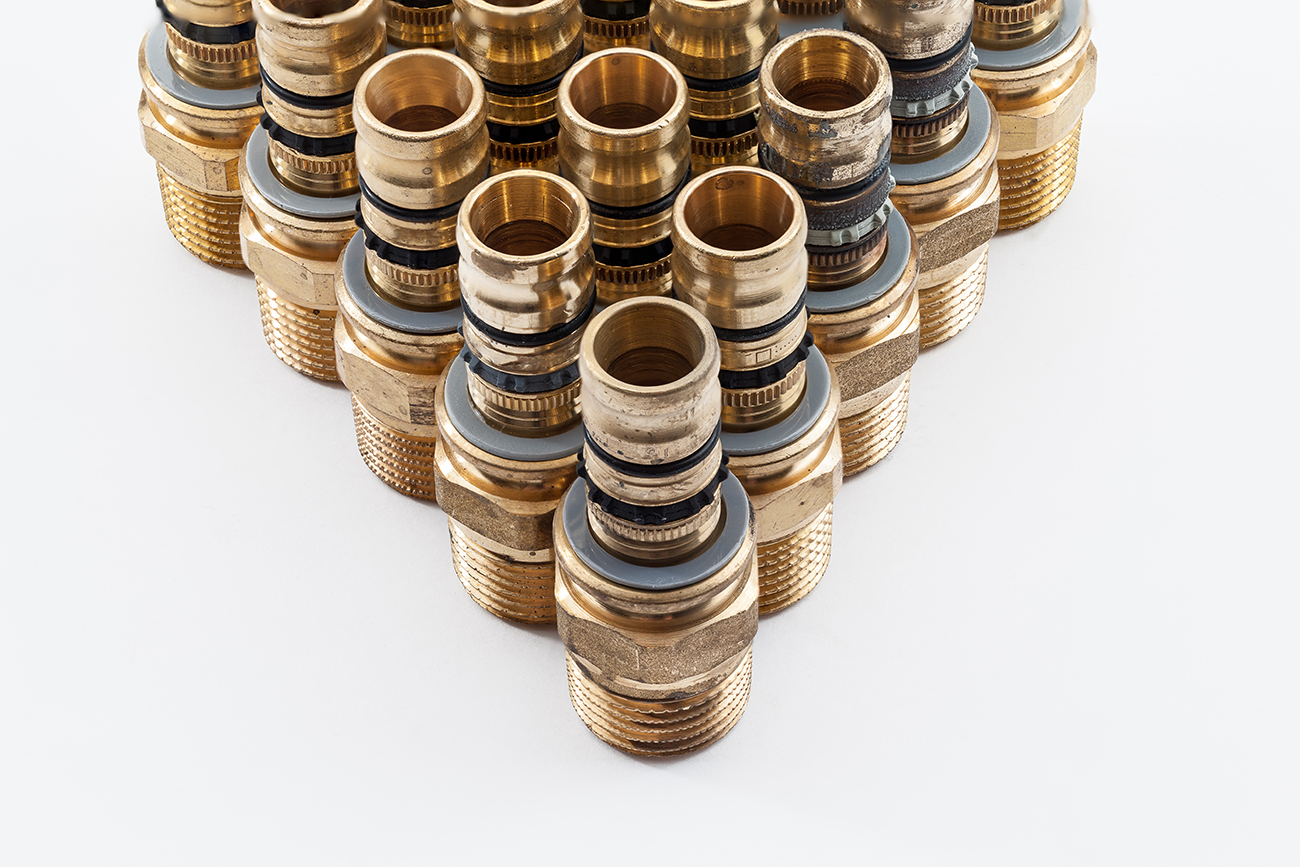The perfect seal. The one that does not fail and holds steady for the expected life cycle of the application. An elusive fairytale of the manufacturing world… Except, here at Marco Rubber, it’s not a fairytale. We help our clients design the right seal every day. As sealing experts, it is what we do best.
Today, we want to break down what the right seal for an application looks like in action. It is not a myth or a fairytale: it’s our job to make it a reality.
It Is a Perfect Fit
First and foremost: the right seal fits perfectly. This is one of the most common mistakes people make when choosing their seal. They miss something important and end up with an incorrectly sized o-ring that quickly fails.
For example, a large aerospace company came to us because of a failing silicone o-ring. It sealed the top of a resin pump compression chamber that would leak resin when the o-ring failed during use. This slowed production, caused a chemical hazard and was a pain to clean up.
Our experts visited the facility and quickly determined the o-rings were too large for the seal. They sat loosely in the groove, which caused them to bunch up when assembled. The bunched material would sometimes be cut or crushed, which caused a complete failure.
We installed a customized, smaller o-ring that functioned perfectly within assembly and testing conditions. Now they have a solution and continue to work with us.
It Is Designed Around Your Application
The right seal should be designed for your specific application, especially if you are operating in harsh environments.
For example, an aerospace company came to us with a composite mold sealing application. They were using large o-rings to seal the tool that were causing difficulties during assembly because they would be slightly too small or large when placed in the snaking groove.
Our experts found that the silicone o-rings were expanding when they touched the hot composite mold. Another problem we encountered was varying assembly methods by technicians.
We used a thermal expansion analysis to accurately recommend a replacement o-ring size which we could manufacture to a significantly tighter tolerance, allowing for more consistent results even with different technicians installing it. We used molded parts instead of splice and vulcanizing.
The new o-rings went on to function perfectly and improve assembly drastically – and we still work with this manufacturer!
It Stands up to Your Environment
Next, the right seal can stand up to your environment. Whether you are operating in extreme temperatures, outdoors, harsh chemicals, or other intense factors, an ideal seal will stand up to the test. In extreme cases, this does result in the need for customization.
For example, an equipment manufacturer needed a seal for a high pressure CNG. Another company recommended a high durometer Buna-N o-ring. After testing the seal and experiencing leakage, they realized the o-rings were not the right fit and came to us.
Our experts recognized the Buna-N o-ring was too hard for the application, so we tested various solutions using Nitrile, HBNR, and FKM at a 70 Shore A hardness to find their unique fit.
Our ultimate solution was a softer Nitrile o-ring and tested it at -40 degrees F at 3600 psi in Nitrogen gas and CNG for 90 hours. We then pressurized the material to 3600 psi for 90 hours and rapidly decompressed it. We looked for damage on the o-rings and found the material performed well at all temperature ranges with only minor swelling and no visible damage.
We were able to help the manufacturer implement the solution and solve their problem thanks to our high level testing capabilities and ingenuity.
It Functions in Dynamic Settings When Needed
While not every application is dynamic, the right seal for a dynamic application needs to function in that setting. If the application is static, this might be less important, but when it matters, it is incredibly significant.
For example, a water jet cutting equipment manufacturer came to our team to develop a high pressure dynamic seal for a piston that intensifies water pressure to 60,000 psi. This jet would use high pressure water to cut a wide range of hard and soft materials into complex shapes.
Our engineering team went to work and designed a custom seal capable of working in a reciprocating piston at 60,000 psi. It was from a special filled PTFE material energized with a stainless steel spring and supported by a high performance back-up ring system.
The seal passed all testing requirements and provided a powerful solution!

It Saves You Money – And Does the Job Well
Lastly, the right seal not only does its job well, but it saves you money. Budgets are an incredibly important part of getting your job done and we take that seriously. We work hard for our clients to provide solutions on budget.
Our best demonstration of this is our customizable, high-performance FFKM material, Markez®. Markez is used in mechanical seals in a wide range of industries to seal gasses and liquids in high speed rotary applications where the o-ring is exposed to aggressive chemicals.
In addition to being a solid alternative to more expensive options, Markez is also typically available with a 6-8 week lead time. It has consistently proven to perform well in seals for leading mechanical seal manufacturers while simultaneously being available at a shorter lead time and including options for cleanroom manufacturing and packaging.
Does This Kind of Solution Exist?
While the perfect seal might feel like a fairytale, here at Marco Rubber we have years of experience at making the impossible possible. We bring the perfect seal to life.
We are sealing experts dedicated to providing you with customized, affordable, and creative solutions. Our team of ingenious engineers and sealing experts is hard at work solving seemingly impossible sealing conundrums as you read this.
Yours could be the next problem they tackle.
